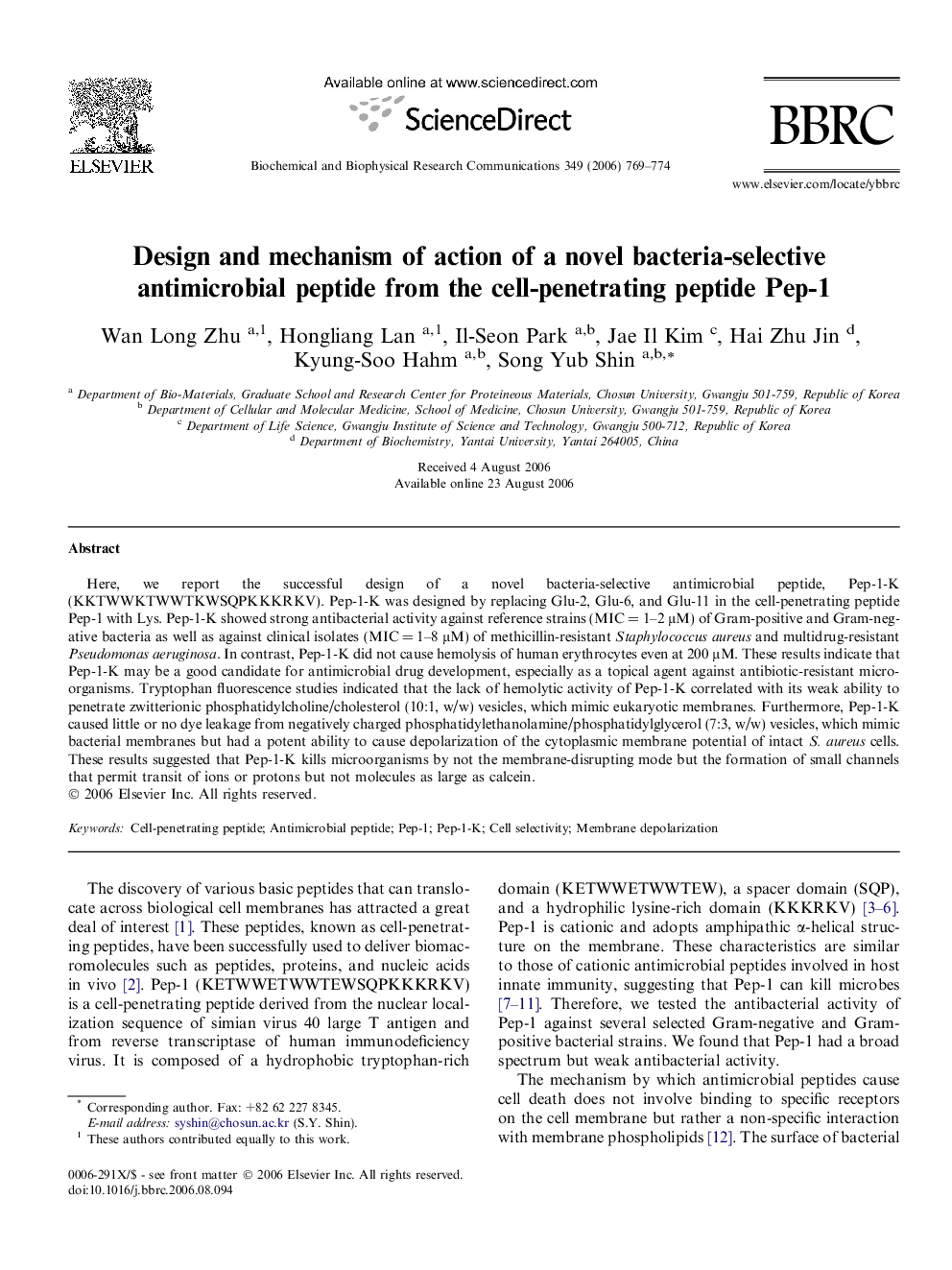| Article ID | Journal | Published Year | Pages | File Type |
|---|---|---|---|---|
| 1938714 | Biochemical and Biophysical Research Communications | 2006 | 6 Pages |
Here, we report the successful design of a novel bacteria-selective antimicrobial peptide, Pep-1-K (KKTWWKTWWTKWSQPKKKRKV). Pep-1-K was designed by replacing Glu-2, Glu-6, and Glu-11 in the cell-penetrating peptide Pep-1 with Lys. Pep-1-K showed strong antibacterial activity against reference strains (MIC = 1–2 μM) of Gram-positive and Gram-negative bacteria as well as against clinical isolates (MIC = 1–8 μM) of methicillin-resistant Staphylococcus aureus and multidrug-resistant Pseudomonas aeruginosa. In contrast, Pep-1-K did not cause hemolysis of human erythrocytes even at 200 μM. These results indicate that Pep-1-K may be a good candidate for antimicrobial drug development, especially as a topical agent against antibiotic-resistant microorganisms. Tryptophan fluorescence studies indicated that the lack of hemolytic activity of Pep-1-K correlated with its weak ability to penetrate zwitterionic phosphatidylcholine/cholesterol (10:1, w/w) vesicles, which mimic eukaryotic membranes. Furthermore, Pep-1-K caused little or no dye leakage from negatively charged phosphatidylethanolamine/phosphatidylglycerol (7:3, w/w) vesicles, which mimic bacterial membranes but had a potent ability to cause depolarization of the cytoplasmic membrane potential of intact S. aureus cells. These results suggested that Pep-1-K kills microorganisms by not the membrane-disrupting mode but the formation of small channels that permit transit of ions or protons but not molecules as large as calcein.
